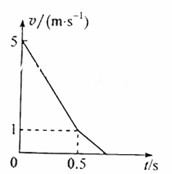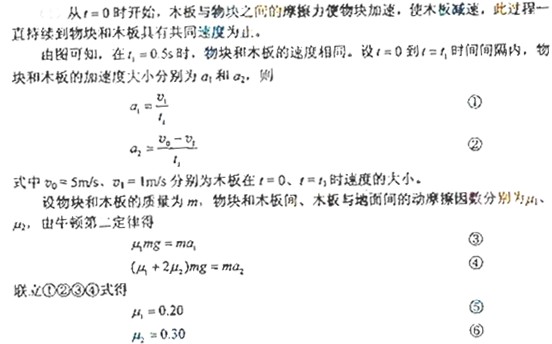问题
问答题
(18分)
一长木板在水平地面上运动,在t=0时刻将一相对于地面精致的物块轻放到木板上,以后木板运动的速度-时间图像如图所示。己知物块与木板的质量相等,物块与木板间及木板与地面间均有靡攘.物块与木板间的最大静摩擦力等于滑动摩擦力,且物块始终在木板上。取重力加速度的大小g=10m/s2求:

物块与木板间;木板与地面间的动摩擦因数:
答案
参考答案:解析:

(18分)
一长木板在水平地面上运动,在t=0时刻将一相对于地面精致的物块轻放到木板上,以后木板运动的速度-时间图像如图所示。己知物块与木板的质量相等,物块与木板间及木板与地面间均有靡攘.物块与木板间的最大静摩擦力等于滑动摩擦力,且物块始终在木板上。取重力加速度的大小g=10m/s2求:

物块与木板间;木板与地面间的动摩擦因数:
参考答案:解析:
